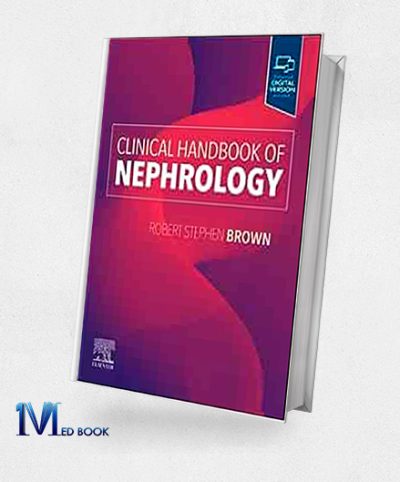Pulmonary Embolism: Contemporary Diagnosis, Risk Stratification And Management (Original PDF From Publisher)
Pulmonary Embolism: Contemporary Diagnosis, Risk Stratification And Management (Original PDF From Publisher)
| Edition |
1st |
|---|---|
| File Size |
9.3 MB |
| Format |
Publisher PDF |
| ISBN-10 |
8891131750 |
| ISBN-13 |
9788491131915 |
| Language |
English |
| Publisher |
Nova Science Publishers |
$180.00 Original price was: $180.00.$30.00Current price is: $30.00.
- The files will be sent to you via E-mail
- Once you placed your order, we will make sure that you receive the files as soon as possible
5/5
Description
Pulmonary Embolism: Contemporary Diagnosis, Risk Stratification And Management (Original PDF From Publisher)
Pulmonary embolism (PE) is a serious medical condition where a blood clot (embolus) travels through the bloodstream and lodges in an artery in the lungs. This potentially life-threatening condition demands prompt diagnosis, accurate risk assessment, and effective management. The book, “Pulmonary Embolism: Contemporary Diagnosis, Risk Stratification and Management,” serves as a comprehensive resource for healthcare professionals navigating the complexities of PE.

Pulmonary Embolism: Contemporary Diagnosis, Risk Stratification And Management (Original PDF From Publisher)
Diagnosis of Pulmonary Embolism:
The book delves into the diagnostic challenges associated with PE. Due to the varied presentations, from asymptomatic cases to life-threatening emergencies, a high index of suspicion is crucial. The text explores the role of clinical features like shortness of breath, chest pain, and coughing in raising suspicion for PE. It then details diagnostic tools like D-dimer testing and pulmonary embolism imaging techniques, particularly Computed Tomographic Pulmonary Angiography (CTPA), which plays a central role in confirming PE diagnosis.
Risk Stratification in Pulmonary Embolism:
Following diagnosis, accurate risk stratification is paramount in determining the most suitable treatment course. The book meticulously explains various risk stratification tools, including the Wells score and the Geneva score. These scoring systems consider factors like clinical symptoms, underlying medical conditions, and laboratory findings to categorize patients into low-risk, intermediate-risk, and high-risk categories of pulmonary embolism. This risk stratification guides treatment decisions, with high-risk patients requiring aggressive intervention to prevent complications.

Pulmonary Embolism: Contemporary Diagnosis, Risk Stratification And Management (Original PDF From Publisher)
Contemporary Management of Pulmonary Embolism:
The book extensively covers the contemporary treatment strategies for PE. For low-risk pulmonary embolism patients, anticoagulation therapy with medications like warfarin or novel oral anticoagulants (NOACs) is the mainstay of treatment. These medications prevent further clot formation and minimize the risk of complications.
For intermediate-risk pulmonary embolism patients, the treatment approach becomes more nuanced. The book explores the role of risk stratification tools within this category. Patients with intermediate-low risk PE might benefit from anticoagulation alone, while those with intermediate-high risk PE might require additional interventions like catheter-directed thrombolysis or surgical embolectomy. These interventions aim to break up or remove the clot to improve blood flow to the lungs.
High-risk pulmonary embolism, characterized by hemodynamic instability and shock, necessitates immediate intervention. The book details the use of systemic thrombolysis with medications like tissue plasminogen activator (tPA) to dissolve the clot rapidly and restore blood flow.

Pulmonary Embolism: Contemporary Diagnosis, Risk Stratification And Management (Original PDF From Publisher)
Additional Considerations:
The book recognizes the complexities of PE management beyond the initial treatment. It addresses the importance of long-term anticoagulation therapy to prevent recurrent pulmonary embolism. Additionally, the text explores the role of Pulmonary Embolism Response Teams (PERTs) in coordinating care for PE patients. PERTs, comprised of a multidisciplinary team of specialists, can streamline diagnosis and optimize treatment decisions, particularly in complex cases.
Conclusion:
“Pulmonary Embolism: Contemporary Diagnosis, Risk Stratification and Management” serves as an invaluable resource for healthcare professionals involved in the diagnosis and management of PE. By providing in-depth information on the latest diagnostic tools, risk stratification methods, and treatment strategies, the book empowers practitioners to deliver optimal care for patients suffering from this potentially devastating condition.
Make sure that you are buying e-books from trustworthy sources. With over a decade of experience in the e-book industry, the Medbook1.com website is a reliable option for your purchase.
Categories:
Other Products:
|
Nadas’ Pediatric Cardiology, 3rd Edition (EPub+Converted PDF) |
| Key Trials in Cardiothoracic Surgery (Original PDF from Publisher |
| Evidence-based Management of Lipid Disorders (EPUB) |
| Electrocardiography for Healthcare Professionals (Original PDF from Publisher) |
| ECG Core Curriculum (Original PDF from Publisher) |
| ECG Core Curriculum (EPUB) |
| Devices In Cardiac Critical Care (EPUB) |
| Clinical Electrophysiology Review, 3rd Edition (Original PDF From Publisher) |
|
Case-based Atlas of Cardiovascular Magnetic Resonance (Original PDF from Publisher) |
|
Urgences et Soins Intensifs de Cardiologie (French Edition) (Original PDF from Publisher) |
Reviews (0)
Be the first to review “Pulmonary Embolism: Contemporary Diagnosis, Risk Stratification And Management (Original PDF From Publisher)” Cancel reply
Related products
Hall, Schmidt, and Wood’s Principles of Critical Care 5th Edition (Original PDF from Publisher)
Rated 0 out of 5
Clinical Handbook of Nephrology (Original PDF from Publisher)
Rated 0 out of 5
Biology Laboratory Manual 13th edition (Original PDF from Publisher)
Rated 0 out of 5
2024 2025 Saunders Clinical Judgment and Test Taking Strategies 8th edition (Original PDF from Publisher)
Rated 0 out of 5
Neuroanatomy through Clinical Cases 3rd edition (Original PDF from Publisher)
Rated 0 out of 5








Reviews
There are no reviews yet.